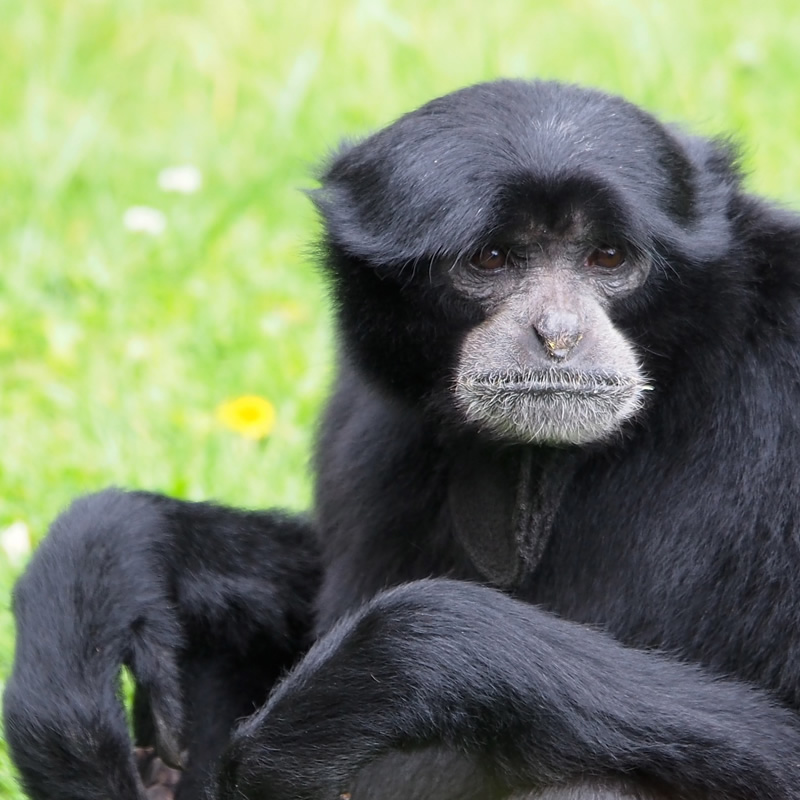
Located
The Siamang is located on the island of Sumatra and on peninsular Malaysia.
Diet
The Siamang is omnivorous; however, the diet consists mostly of fresh leaves and fruit. They will also consume nuts, insects, eggs and small vertebrates.
Habitat
The Siamang can be found in the rainforests, monsoon forests and mountain forests of Sumatra and peninsular Malaysia. The Siamang is arboreal - meaning they spend most of their lives in the trees. They travel across the trees of the rainforest using a mode of transportation called brachiation. Brachiation is generally used by primates when they swing from tree to tree with their arms only. While one arm is holding on to a branch or limb, the other arm will be moving toward the next branch. They can carry objects with their feet during this maneuver. The Siamang is also very acrobatic and can leap large distances while moving across the rainforest.
Size and Description
The Siamang ranges from 2.5 - 3 feet in height. The arm span can be 2 - 2.5 times the size of the body. The Siamang can weigh between 18 - 27 pounds. The coat of the Siamang covers most of its body. It is black and consists of long hairs. The hands and feet are much like the hands and feet of other primates except that the second and third toes are webbed together. Having two or more digits fused together is defined as being syndactylous. The face resembles that of many other primates, but can be distinguished by a large gray or pink throat sac. The throat sac is used for communication between Siamangs. The sounds may resemble loud booms or barks, and will be used in defending a territory and other activities. The throat sac will inflate while the Siamang makes sounds.
Reproduction
Siamangs generally mate for life with one partner. The gestation or pregnancy period is between 7 - 8 months. The female will most often give birth to one offspring.
